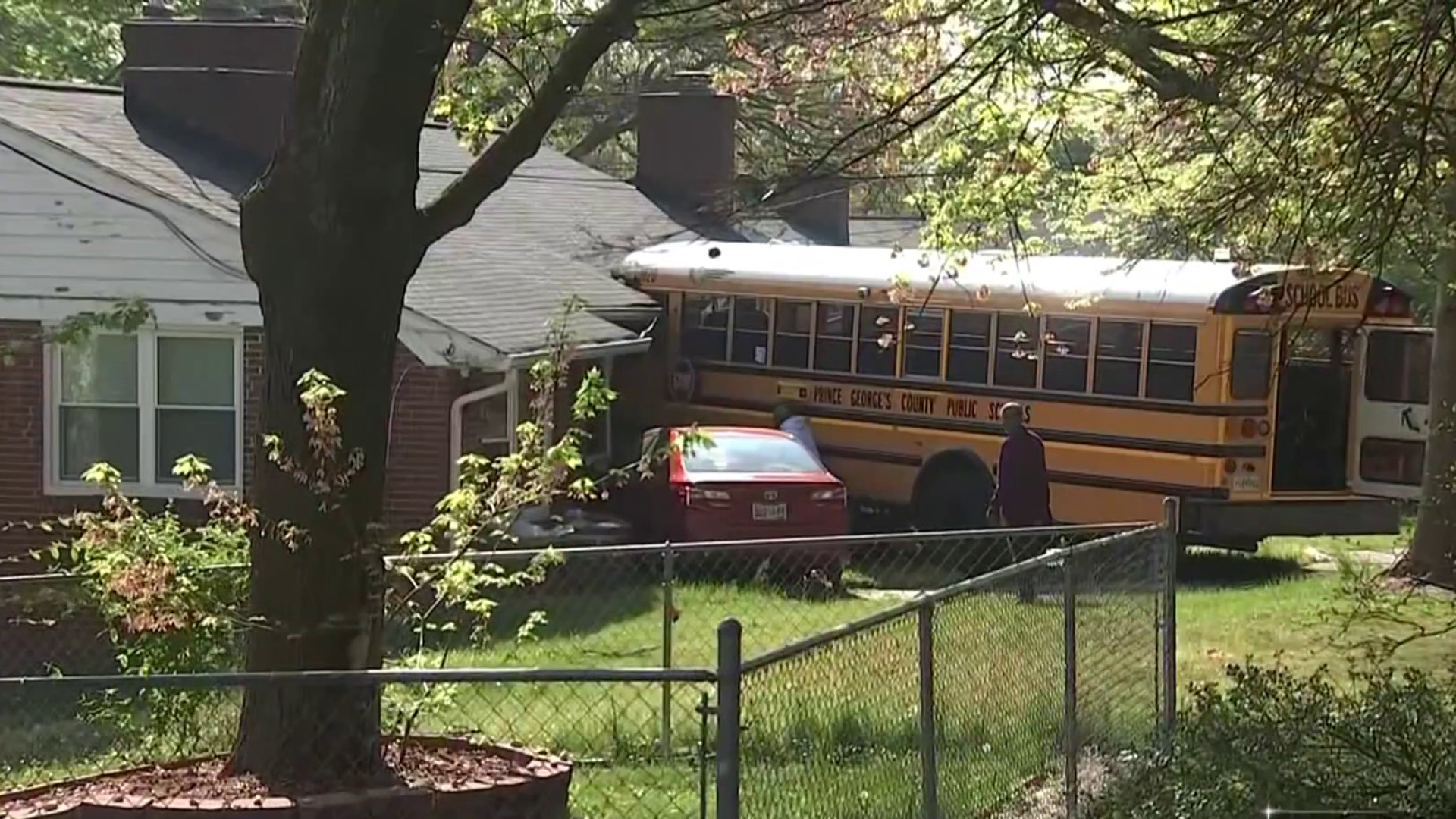Long before you even think about getting out of bed, Scott Wivell and the crew of the Lady Lynnae already drove two hours from their home on Virginia’s Eastern Shore to the banks of the Rappahannock River.
“We got up at three this morning,” Wivell said as he waited on the deck of his boat in the inky darkness. “We’ve got to wait a half-hour before sunrise before we can leave. You’ll probably see an airplane flying shortly. They fly the airplane to see when you leave, because if you leave early, you get a ticket and can’t work that day.”
As some of the watermen ate hot crab for breakfast, they vented their frustration at how the Virginia Marine Resources Commission (VMRC) makes them feel like “we’re all poachers and criminals.”
“The reality is 95 percent of us abide by the law all day long, every day,” Wivell said.
He and the other watermen invited News4 to see what wild oyster harvesting really looks after an I-Team investigation into oyster poaching, which found all of Virginia’s violators are repeat violators, representing about 5 percent of all oyster licenses.
Wivell and the others said VMRC’s comments in that previous investigation angered them because they feel like the agency is putting the watermen who follow the rules into a dangerous situation.
Too Many Boats in One Spot
Local
Washington, D.C., Maryland and Virginia local news, events and information
At 7:02 a.m., a half-hour before dawn, boats roar to life and start charging up the Rappahannock toward what they call “the public rock.”
It takes about 40 minutes for the Lady Lynnae to arrive, and Wivell quickly maneuvered in between almost 100 other boats of different shapes and sizes. He pointed to different boat names, noting they’re from all over the state.
Almost every oysterman in the state, Wivell explained, works one spot on the river.
The captains all steer their skiffs in tight circles, called “licks,” to drag metal dredges along the bottom of the river.
Using metal chain and a hydraulic system he built himself, Wivell helps his crew pull in about 175 pounds of shell each time, discarding any oysters less than 3 inches.
He perpetually steers and sorts, trying to avoid careening into the other boats skimming past within just feet of each other.
They’re packed in so tightly, the I-Team witnessed crews and dredges become tangled. The boat captains said even though they’re some of the best navigators on the water, collisions happen on a regular basis.
“The Bay Is Loaded With Oysters”
“There's no reason why we can't be more spread out,” said Lisa Carol Rose, executive director of Waterman of Virginia Engaged (WAVE). “The bay is loaded with oysters."
The fifth-generation in her family to work this water, Rose said her group wants VMRC to "open up more turf. That way you're not depleting a rock all at one time."
First Sgt. Herbert Bell is in charge of patrolling the water for the VMRC.
"There can be quite a few boats out there,” he said. “It can get to be some really tight space."
The VMRC told the I-Team it actually opens thousands of acres along the stretch of the river in November, but the commission said the watermen all “hone in” on a small spot because it is where the agency drops thousands of oyster shells to help baby oysters take root.
The Fight Over Oyster Shells
Jim Wesson, a former waterman who now runs VMRC’s Conservation and Replenishment program, said he only gets $2 million to seed the baby oysters. “We don’t have enough shell.”
He explained the state has 240,000 acres of public oyster grounds but really only maintains 1,500 acres. “1,500 acres needed new shell in 2015, but we only had enough money to do 500 acres.”
“We mine reefs in the James River for shell by digging 40 feet in the bottom, similar to mining gravel,” Wesson said. “The dredge brings them up. We sort by size of shell and keep the bigger shells.”
But Wivell, Rose and the other watermen said they dislike that “fossil” shell, claiming they’re too old and baby oysters won’t take root. WAVE wants the state to buy new “house” shell from the discarded shell produced by local shucking houses.
But VMRC said the price of house shell exploded as more aquaculture companies buy up the house shell for oyster-farming operations.
“The reality is the majority of oyster-producing states are privately driven now,” Wesson explained. “It’s all aquaculture in places like Oregon and Washington. Maryland and Virginia are the last holdouts on wild harvesting on public grounds maintained by the state.”
“Rotating” the Public Rock
Wesson dismissed the idea that Virginia’s fossil shell isn’t working. “Gravel works, golf balls work. Oysters will attach to anything clean.”
But the dredges the watermen use to hand scrape, Wesson said, are “super-efficient” and “catch up all the oysters on the rock within two weeks after opening.”
Since it takes two to three years for babies to grow big enough to keep, VMRC began rotating where watermen could harvest about 10 years ago, opening up a public rock only once every two to three years.
VMRC credits the rotation with why oystermen have gone from pulling in about 20,000 bushels a decade ago to more than 650,000 bushels this year.
“We Are at a Critical Stage Right Now”
But Wesson said he’s very concerned the owner of the only machine used to dredge for oyster shells in the nation wants to retire. “He’s talking about scrapping it,” Wesson said. “If this thing gets scrapped, all these guys will need to find land jobs because it will be over. We are at a critical stage right now."
“Watermen would get a whole lot more bang for their buck if they ask their legislators for more shell money instead of fussing over more areas to work,” Wesson concluded.
“They want the same thing that we do: A sustainable Chesapeake," Rose responded. "But they’re not budging; we’re not budging.”
The watermen want VMRC to open up other areas during peak oyster season.
“They do a good job with the rotation because it gives the oysters a chance to get bigger,” Wivell said. “But when they open the areas, they don't open enough areas at once."
He personally would like VMRC to open up the public rocks near where he lives on the Eastern Shore in November. “If they had an area open over there, we wouldn't be over here right now,” he explained. “It would be a much less dangerous situation."
VMRC agrees there are too many boats on the water, but instead of opening up new spots, the agency recently voted to stop issuing new licenses. Only full-time watermen will be able to hold onto their oyster licenses. VMRC told the I-Team it hopes the action will knock the number down from about 900 to 600 licenses as part-timers leave the business and older watermen retire.
Wivell’s crew is proof it really is back-breaking work to pull in the limit of 24 bushels.
At $45 a basket, they split about $1,000 between them before driving another two hours home – only to turn around and race back out on the water again the next day.
Reported by Tisha Thompson, produced by Rick Yarborough, and shot and edited by Jeff Piper.



